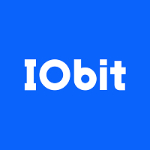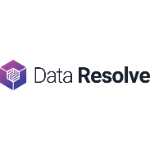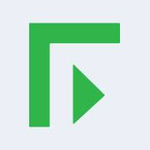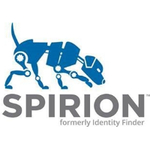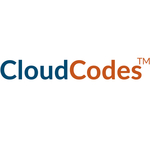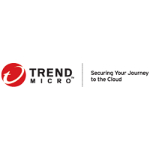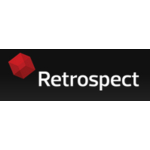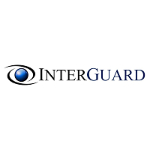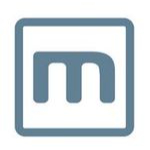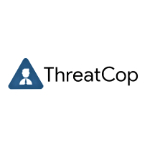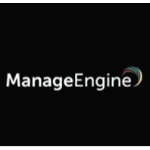
TechnologyCounter provides genuine, unbiased real user reviews to help buyers make informed decisions. We may earn a referral fee when you purchase through our links, at no extra cost to you.
List of 15 Best Data Loss Prevention Software
Showing 1 - 15 of 34 products
ManageEngine Endpoint DLP Plus
Tools by Zoho Corporation Pvt. Ltd.
ManageEngine Endpoint DLP Plus is a robust data loss prevention (DLP) solution designed to safeguard sensitive information across an enterprises managed endpoints...Read ManageEngine Endpoint DLP Plus Reviews
DataSecurity Plus is a solution for all your data security needs. With its advanced features and robust protection measures, DataSecurity Plus ensures the safety and confidentiality of your sensitive information. Say goodbye to cyber threats and safe...Read DataSecurity Plus Reviews
IObit is a leading software company that specializes in developing innovative and user-friendly tools to optimize and secure your computer. With years of experience and a team of skilled developers, IObit has become a trusted name in the tech industr...Read IObit Reviews
Easy to use and affordable endpoint data loss prevention solution that comes with automated data discovery & classification, anomaly detection, risk management, smart policies & rules engine, OCR, fingerprinting, and forensic analysis features...Read Teramind DLP Reviews
inDefendis a ultimate solution for protecting your digital assets. With its state-of-the-art technology, inDefend offers unparalleled security and peace of mind by constantly monitoring and safeguarding your data against cyber threats. Say goodbye to...Read inDefend Reviews
Kogni is an innovative software solution designed to enhance your businesss data management and analytics capabilities. With its advanced features and user-friendly interface, Kogni empowers organizations to efficiently collect, secure, and analyze d...Read Kogni Reviews
Forcepoint DLP is a data loss prevention software designed to protect businesses against insider threats and data breaches. With its advanced technology and robust features, Forcepoint DLP helps organizations secure sensitive information and maintain...Read Forcepoint DLP Reviews
Spirion is a software that safeguards your sensitive data from unauthorized access and potential threats. With its intelligent scanning and detection technology, Spirion helps businesses and individuals protect their valuable information and maintain...Read Spirion Reviews
CloudCodes, your trusted cloud security solution. Empower your business with our innovative software that ensures data protection, access control, and compliance with ease. With CloudCodes, safeguard your sensitive information from cyber threats and...Read CloudCodes Reviews
Trend Micro is a leading cybersecurity company trusted by millions of individuals and organizations worldwide. With its advanced technology and constant innovation, Trend Micro offers robust protection against online threats and supports secure digit...Read Trend Micro Reviews
Commvault Backup is a data management software that offers a reliable is a solution for backing up, storing, and recovering critical information for businesses of all sizes. With its user-friendly interface features, Commvault Backup allows organizat...Read Commvault Backup Reviews
Retrospect, the all-in-one solution for backing up and recovering your valuable data. Designed with your convenience in mind, Retrospect streamlines the backup process, ensuring your important files are always secure and easily accessible. Say goodby...Read Retrospect Reviews
Interguard is a software that enables businesses to efficiently manage and monitor their employees productivity while ensuring data security. With its advanced features and user-friendly interface, Interguard is revolutionizing the way companies main...Read INTERGUARD Reviews
Mimecast Cloud Archive is a perfect solution for a secure and easy-to-use email archive platform. With Mimecast, you can store, preserve and search through your emails with unparalleled efficiency and reliability. Say goodbye to the hassle of managin...Read Mimecast Cloud Archive Reviews
ThreatCop is an innovative security solution that keeps your organizations sensitive data safe from cyber threats. With advanced threat detection and real-time monitoring, ThreatCop provides unparalleled protection against malicious attacks, ensuring...Read ThreatCop Reviews
- What Is Data Loss Prevention Software?
- Top Reasons Why Businesses Need Data Loss Prevention Software?
- What Are the Top Key Features of Data Loss Prevention Software?
- What Are the Top Benefits of Data Loss Prevention Software?
- What Are the Steps to Choose the Right Data Loss Prevention Software?
- What Are the Types of Data Loss Prevention Software for Different Industries?
- What Are the Technology Trends for Best Data Loss Prevention Software?
- What Are the Deployment Options for Data Loss Prevention Software?
What Is Data Loss Prevention Software?
Data loss prevention software, also known as DLP, is a software application designed to safeguard sensitive data against unauthorized access, disclosure, or improper handling beyond the confines of the business.
This is achieved by the implementation of proactive security controls based on policy, which actively monitor, detect, and mitigate events of data loss. DLP software solutions equipped with a range of features and tools that facilitate the development and implementation of data access policies, thereby mitigating potential security risks.
Fundamentally, best dlp software operates by monitoring the flow of data within the network of an organization and detecting files that contain sensitive information. Subsequently, the system incorporates distinct measures such as encryption, auditing, and alerting in order to mitigate the risk of unwanted access to the aforementioned data.
In addition to facilitating stringent user access control, this system possesses the capability to identify and thwart any unauthorized data breaches. Furthermore, it possesses the capability to identify and mitigate the unlawful utilization of data by individuals with malevolent intent.
The utilization of DLP software can be perceived as a strategy for mitigating the potential of data loss, while simultaneously enabling authorized users to retrieve the necessary data. The implementation of appropriate security measures can effectively mitigate the risk of data leakage originating from external sources, thereby safeguarding sensitive information against unauthorized access and potential misuse.
In essence, this technology offers an additional level of safeguarding to the organization's data repository, thereby shielding it from potential security vulnerabilities with a high degree of efficiency and dependability.
Top Reasons Why Businesses Need Data Loss Prevention Software?
1. In order to mitigate the risk of unauthorized access to sensitive and proprietary data, such as customer information.
2. In order to mitigate the likelihood of data breaches and adhere to diverse sector compliance regulations.
3. The primary objective of dlp data loss prevention tools is to identify and safeguard the intellectual property (IP) of the organization in order to mitigate the risk of infringement by future competitors.
4. In order to promptly identify and address various forms of security risks, such as malware and ransomware, it is imperative to implement effective detection and response mechanisms.
5. In order to effectively detect and manage instances of data leakage, it is necessary to identify and exercise control over many potential sources of such incidents, such as emails, web browser activity, printouts, and removable media.
6. In order to mitigate the potential for unauthorized use of privileged user access privileges or compromised accounts.
7. In order to oversee and regulate the flow of data being communicated between third-party systems and networks, it is necessary to implement measures for monitoring and controlling egress and ingress.
8. The primary objective of dlp software solutions is to identify and promptly notify administrators of any atypical user or network behavior.
9. In order to mitigate the risk of unauthorized data extraction and insider threats of a harmful nature.
10. The objective of data loss protection software is to oversee the utilization of cloud and public infrastructure services and identify any instances of unauthorized access.
11. The objective is to identify instances of policy non-compliance related to the management of sensitive data using encryption or sanitization methods.
12. In order to mitigate the potential loss of data in the case of a security breach, measures should be taken to minimize the amount of data that can be compromised.
13. In order to fulfill the need for openness and accountability, it is necessary to establish an audit trail that documents data access decisions.
14. In order to promptly detect and address specific cyber attacks.
15. The objective is to implement an automated system for enforcing existing data security regulations across all systems.
What Are the Top Key Features of Data Loss Prevention Software?
The top features of data loss prevention software include:
• Content Awareness: Data loss prevention (DLP) software possesses the capability to identify and constrain the transfer of sensitive information by adhering to predefined policy configurations.
• Detection and Alerts: Data Loss Prevention (DLP) solutions include the capability to monitor and trace data transmissions, hence enabling the timely detection and notification of administrators in instances where the transfer of sensitive data occurs.
• Data Leak Prevention: The use of automated data leak prevention software measures serves as a safeguard against both deliberate and inadvertent data loss.
• Content Filtering: The primary purpose of content filtering services is to selectively restrict or permit the transmission of specific content within a network.
• Data Access Controls: Data access controls enable system administrators to implement restrictions on the access to confidential files, databases, and applications.
• Encryption: Encryption is an efficacious mechanism for safeguarding data throughout its transmission and while it is being stored.
• Activity Monitoring: DLP systems may encompass functionalities that involve the monitoring of user actions and the generation of logs.
• Device and Network Tracking: Data loss protection software possesses the capability to monitor and record file activity as well as network access across a range of devices.
• Auditing and Reporting: Data Loss Prevention (DLP) solutions have the capability to produce comprehensive auditing and reporting for all data transfers.
What Are the Top Benefits of Data Loss Prevention Software?
1. Reduces Risk of Data Breaches: Data loss prevention (DLP) software serves the purpose of safeguarding sensitive data by establishing a protective barrier between internal networks and external entities, hence mitigating the risk of illegal access or theft.
2. Enhances Data Security: Data loss prevention (DLP) software plays a crucial role in regulating the flow and accessibility of firm data, thereby restricting unauthorized individuals from gaining entry and ensuring that only authorized staff are granted access.
3. Automates Monitoring: Data leak prevention software facilitates the automated monitoring of data, hence enhancing the ability to identify any unauthorized transmission of sensitive information.
4. Automates Compliance: The best dlp software facilitates the automation of procedures, thereby ensuring that your organization adheres to industry requirements and effectively manages data security.
5. Automates Incident Response: DLP data loss prevention tools is designed to automate incident reactions in order to promptly address any potential data breaches.
6. Improves Productivity: The best data loss prevention software facilitates the automation of data security processes, so enabling staff members to allocate their time towards other essential business activities.
7. Easy to Deploy: The deployment and utilization of DLP software solutions is characterized by its simplicity, rendering it highly suitable for organizations of varying scales.
What Are the Steps to Choose the Right Data Loss Prevention Software?
1. Determine your data loss prevention needs: The initial stage in the selection process of an appropriate data loss prevention software entails identifying the specific requirements that need the utilization of such software.
It is imperative to carefully evaluate the nature of the data that requires safeguarding, identify the potential dangers and threats to the data, and establish appropriate methods for data loss prevention.
2. Research online: After establishing the specific requirements for the best dlp software, the next step is conducting internet research to identify the most suitable data loss prevention software that aligns with those requirements. Seek software solutions that exhibit reliability, security, and cost-effectiveness.
3. Check for security features: After compiling a selection of software solutions, it is imperative to assess the security features offered by each solution in order to safeguard your data.
It is imperative to ensure that the software incorporates robust measures such as data encryption, user authentication mechanisms, and effective access control protocols to safeguard the integrity and confidentiality of the data.
4. Test the software: Prior to making a decision on a specific data leak prevention software, it is imperative to do thorough testing in order to ascertain its compatibility with the specific requirements at hand.
Conduct a comprehensive evaluation of the program to ascertain its conformity to the intended design, user-friendliness, and capacity to facilitate customization of security parameters.
5. Consider the cost: Finally, it is important to take into account the financial implications of acquiring the data leak prevention software, ensuring that it aligns with the allocated budget. Various software solutions will be accompanied by varying price points, hence it is imperative to ensure optimal cost-effectiveness in your selection.
What Are the Types of Data Loss Prevention Software for Different Industries?
DLP data loss prevention tools has the capability to monitor, identify, and automatically safeguard sensitive data from unauthorized access, leakage, or disclosure. Various sectors employ distinct data loss prevention systems based on their specific security requirements.
There are several prevalent categories of the best data loss prevention software that are commonly employed.
1) Network DLP: Network data loss prevention (DLP) software solutions are designed to examine all network traffic in order to identify and protect critical data, while also preventing unauthorized file transfers.
2) Endpoint DLP: Endpoint Data Loss Prevention (DLP) solutions are designed to oversee and regulate data at the endpoint, employing predefined rules established by the system administrator.
3) Database DLP: Database Data Loss Prevention (DLP) solutions are designed to examine and evaluate databases as well as other repositories of structured storage in order to identify and protect critical data.
4) Multi-Channel DLP: Multi-Channel Data Loss Prevention (DLP) solutions are designed to effectively monitor and oversee data across several platforms, including collaboration tools, email systems, web and cloud apps, as well as local storage.
5) Application DLP: DLP software is utilized to assess application data with the purpose of identifying instances of data loss or leakage.
6) Identity DLP: Identity data loss protection software serves the purpose of safeguarding user identities and aiding organizations in identifying potential internal security risks.
7) Cloud DLP: Cloud data loss prevention (DLP) solutions are designed to provide security and monitoring capabilities for data stored in cloud-based applications and services.
The selection of an appropriate data loss prevention software for a company is contingent upon the industry and its specific security requirements.
What Are the Technology Trends for Best Data Loss Prevention Software?
Data loss prevention (DLP) software plays a crucial role in safeguarding sensitive data for enterprises. Typically, a software solution of this nature implements policies, detects sensitive data, and implements suitable measures to safeguard the data from inadvertent or intentional harm or alteration.
Recent advancements in technology within the best dlp software industry have resulted in enhanced efficiency and cost-effectiveness of data loss prevention measures. Advancements in the field of artificial intelligence (AI) have led to the development of enhanced data intelligence services, facilitating improved data analysis, automated data classification, and expedited report preparation.
Furthermore, companies are implementing user management and governance controls that are inherent to the data loss prevention (DLP) solution platform. This streamlines the integration processes of DLP and reduces the requirement for complex customizations.
Cloud-based deployments are experiencing a rise in popularity due to the recognition by enterprises of the cost and administration advantages associated with software-as-a-service (SaaS) solutions. Unified data loss prevention (DLP) solutions are experiencing a surge in popularity due to their ability to offer organizations a consolidated perspective on their data security policies and procedures.
This enhanced visibility and streamlined approach to compliance operations contribute to their growing adoption. In order to effectively establish a best data loss prevention software within a company, it is imperative to consider the incorporation of contemporary technological advancements.
These include the integration of artificial intelligence (AI), adoption of data leak prevention software, implementation of user and governance controls, and utilization of cloud-based deployments.
What Are the Deployment Options for Data Loss Prevention Software?
DLP software solutions has the capability to be implemented using many deployment methods. In a general sense, organizations have the option to implement DLP data loss prevention tools over their whole network, on a specialized device, or through cloud-based deployment.
Typically, organizations employ network-wide Data Loss Prevention (DLP) solutions across all their devices, networks, and nodes. This methodology enables the surveillance of individual files and activities at various locations within the network, making it particularly suitable for enterprises seeking to implement complete data loss prevention (DLP) policies.
Alternatively, it is also feasible to implement the best dlp software on specialized devices with restricted capabilities. These appliances are commonly deployed as either physical or virtual entities and function in conjunction with network proxy or traffic devices. This deployment is specifically tailored for enterprises seeking to safeguard a restricted number of high-risk systems against potential data loss.
In conclusion, the utilization of cloud-based data loss protection software offers comparable advantages to those achieved through complete network or local device deployment, while requiring reduced exertion and expenditure. Organizations are required to perform system configuration in order to prepare it for operational use.
One of the primary benefits of employing the best data loss prevention software is in the ability of organizations to obtain timely updates and effectively monitor for potential hazards through a web-based interface.

